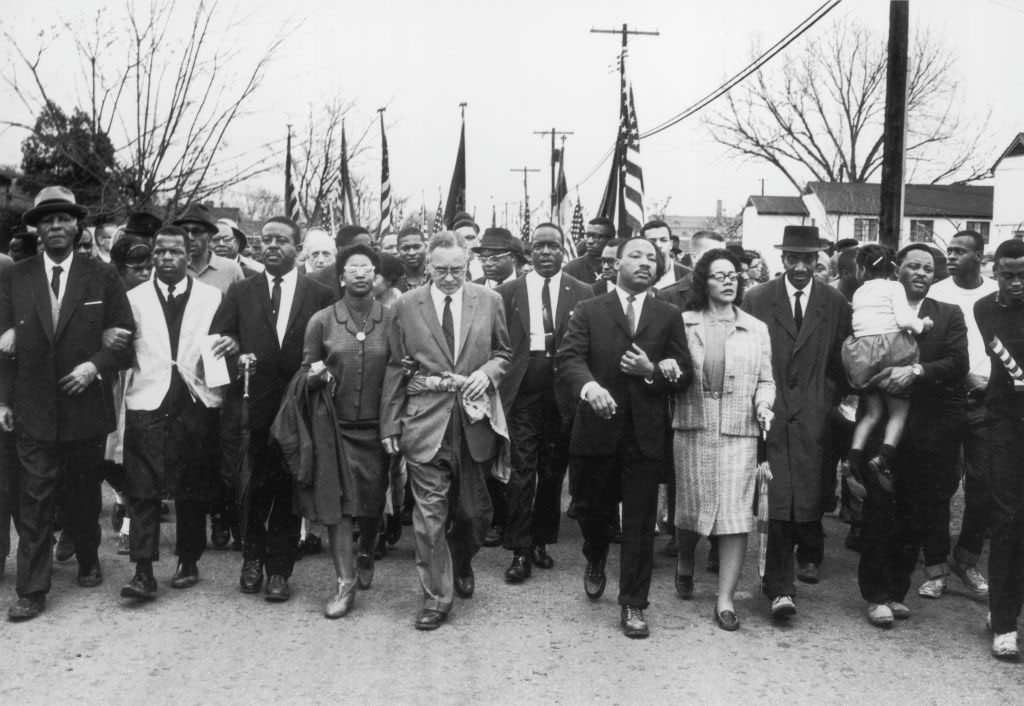Four years ago, for the holiday of Shavuot, I wrote about my two pygmy goats. How I’d rescued one from a butcher shop, another from an abusive home, and brought them to live, along with our three chickens and two dogs, in the backyard of our Venice home.
This is the end of that story.
We had the goats for seven years — a good biblical number. They frolicked and ate and occasionally broke free from their gated area and rampaged through my garden. Nevertheless, we grew attached to Ollie and Goldie Horn, as humans inevitably do to goats. Goats have a way of getting under your skin.
Then two things happened at once. I got tired of having my garden routinely destroyed. Two small goats could reduce 20-foot hedges to Seussian sticks in an afternoon. But keeping them locked up day after day made me feel less like a farmer and more like a jailer. I had saved their lives, yes, but could I do more?
Around the same time these feelings stirred in me, my wife, Naomi, developed asthma. She went to the doctor, who naturally asked her if she had any pets.
“Yes,” she said. “Two dogs.”
“Oh,” said the doctor, as if, no big deal.
“Wait, that’s not all,” Naomi added. “Three chickens. And two goats.”
The doctor looked up. “Did you say goats?”
The only thing worse for asthma than dog dander, said the doctor, is chicken feathers. And the only thing worse than feathers, he said, was hay.
They had to go.
What started as a lark ended up in guilt — over my wife’s condition, over the ultimate fate of the animals I had, on an impulse, adopted. I knew that serious farmers are scrupulous about what they introduce into their flocks and herds. And if our goats had to go, but couldn’t be adopted — the alternative would not be good.
I posted an ad on Craigslist offering free pygmy goats and hens to a good home — but not for meat, I specified. A man with a thick accent called to say he wanted them immediately.
“You know how to take care of them?” I asked.
“What?” he said. “Yeah, yeah, yeah, I take care of them.”
I hung up.
A woman called next, and when I tried to explain that the goats had a skin condition that wasn’t fatal but contagious to other goats, she kept brushing me off.
“It’s OK, it’s OK,” she said — as if she knew the goats wouldn’t be around long enough to infect anyone or anything.
The chickens were easier to place. My neighbor knew a woman near San Diego who raises laying chickens on her large property. I checked out her Facebook page and saw post after obsessive post of happy birds strolling around in the sun. We made contact, she swung by on a visit to L.A. — done. Now I keep up with my chickens on Facebook.
At the same time, Naomi reached out to the Brandeis-Bardin Campus in Simi Valley, home to horses, cattle, goats, chickens — all manner of farm animals that the campers at Alonim get to see and pet.
Before long, I was in touch with Aryeh Goldman, who runs the camp’s Teva program. Teva is Hebrew for “nature,” and Aryeh struck me as a nature boy. Crew-cut red hair, solidly built, gentle demeanor. He checked with his vet regarding the goats’ skin condition, then fixed up an old corral for them. A couple of weeks later, he invited me and the goats to come.
I rented a van and drove the goats out. What Aryeh was offering surpassed my dreams. It was almost an entire hillside, shaded by two huge oak trees, studded with rocks and small boulders. A newly repaired fence ran along the perimeter, keeping coyotes at bay. Beyond the fence, the Santa Susana mountains stretched on undisturbed.
Ollie and Goldie would have far better views here than they’d had with me. Plus, on the north side of the fence was a compound filled with at least 30 full-size goats — does and their newborn kids. A goat Gan Eden.
I led Ollie and Goldie into their new home. They stood by the fence, nervous, looking back out at me. I took pictures — first day of school. Goldie nuzzled me as I neared the gate to leave, and I pushed her back. Then I shook Aryeh’s hand and said goodbye.
Over the next year, I visited a couple of times. Once work took me to the camp, another time Naomi and I were invited to a Shabbat service with the campers. Each time, I made a beeline for Goldie and Ollie.
When I opened the gate and walked in, they both trotted up to me.
Aryeh told me they had become very popular with the Teva interns and the campers.
“They renamed them,” he said, shyly. “I hope that’s OK.”
The late founder of Brandeis-Bardin was Shlomo Bardin. His wife was Yaffa. Ollie was now Shlomo. Goldie was now Yaffa.
Shlomo and Yaffa ran toward me. Did they recognize me? Of course. Miss me? I doubt it. Aryeh said that the overnight campers regularly took them for walks and showed them off to the littlest day-campers, for whom the big goats are too intimidating.
Back at home in Venice, no signs of my animal husbandry remained. I scraped the area clean, covered it with decomposed granite, and planted a row of citrus trees along the fence. In a day, my yard went from Beverly Hillbillies to Jardin des Tuileries.
Time passed. The garden and hedges and trees flourished — there were no escaping goats to decimate them. All that was left of the barnyard was a photo of Ollie with the chickens on his back that I used as my screensaver on my iPhone. And occasional calls from Aryeh updating me on the goats’ camp experience.
Late last winter, he called again. This time his voice was subdued.
“I don’t have good news,” he said.
One night, coyotes had gotten into the corral. The next morning, he discovered Goldie — Yaffa — dead, with Shlomo standing by her. She had a single puncture wound in her throat.
“She wasn’t eaten,” Aryeh said. “They didn’t drag her away. We think they got in somehow, and Yaffa used her horns to defend Shlomo, and she got bitten, but still she chased them off.”
Then she died.
They moved Shlomo to the yard with the large goats, and Aryeh said he plans to acquire seven new pygmy goats because ours had proven so popular.
As for Goldie, I mean, Yaffa? Aryeh told me that they buried her on a hillside covered in spring flowers. Several of the camp’s staff and campers came for the funeral, and some former Teva interns even drove back to the campus just to say goodbye. “We all said a few words and shared in her memory and each of us shoveled some dirt,” Aryeh told me. “It was an extremely sad day.”
Goats do have a way of getting under your skin.
Celebrate Shavuot and pygmy goats with this recipe:
Goat Cheese, Honey & Pistachio Mini Cheesecakes
For the pistachio crust:
- 1 heaping cup shelled, roasted, and salted pistachios
- 1/4 cup granulated sugar
- 3 tablespoons unsalted butter, melted
For the filling:
- 11-ounce homemade chèvre, room temperature or one 11 ounce log mild goat cheese
- 1/4 cup granulated sugar
- 1/2 cup (4 ounces) crème fraîche
- 2 tablespoons honey
- 1/4 teaspoon pure vanilla extract
- Pinch of fine sea salt
- 3 large eggs
If using homemade chèvre, drain goat cheese in strainer or cheesecloth overnight in refrigerator.
For the pistachio crust, combine pistachios and sugar in food processor or mini chopper and process until it becomes a fine meal. Transfer the mixture to a bowl and stir in the melted butter; the mixture should resemble wet sand. Divide the dough evenly among 12 wells of an individual cheesecake pan (or a mini muffin pan filled with cupcake liners) and press firmly into the bottom.
Preheat the oven to 400°F. While the oven is heating, refrigerate the crusts until chilled. Bake the crusts for 10 to 12 minutes until set. Cool completely before filling.
For the filling, lower oven temperature to 300°F. Combine the goat cheese and sugar in the bowl of a food processor and process for 1 minute. Add the crème fraîche, honey, vanilla, and salt and process for another 30 seconds. Scrape down the sides of the bowl if needed. With the food processor running, add the eggs through the feeding tube one at a time, and mix until just combined; do not over mix. (If you do not have a food processor you can whisk the ingredients by hand in the same order.)
Transfer the filling to a measuring cup with a pour spout and fill each cheesecake well almost to the top. Place the cheesecake pan on a sheet pan and bake for 18 to 20 minutes, until cheesecakes are just barely set. Remove from the oven and allow to cool to room temperature. Transfer the pan to the refrigerator and chill the cheesecakes for a minimum of 4 hours.
To assemble, remove the cheesecakes from the pan and remove metal rounds from the bottom. Bring to room temperature before serving. Drizzle with Meyer lemon creme and a sprinkle of candied pistachios.
Follow Rob on Twitter and Instagram @foodaism.























 More news and opinions than at a Shabbat dinner, right in your inbox.
More news and opinions than at a Shabbat dinner, right in your inbox.